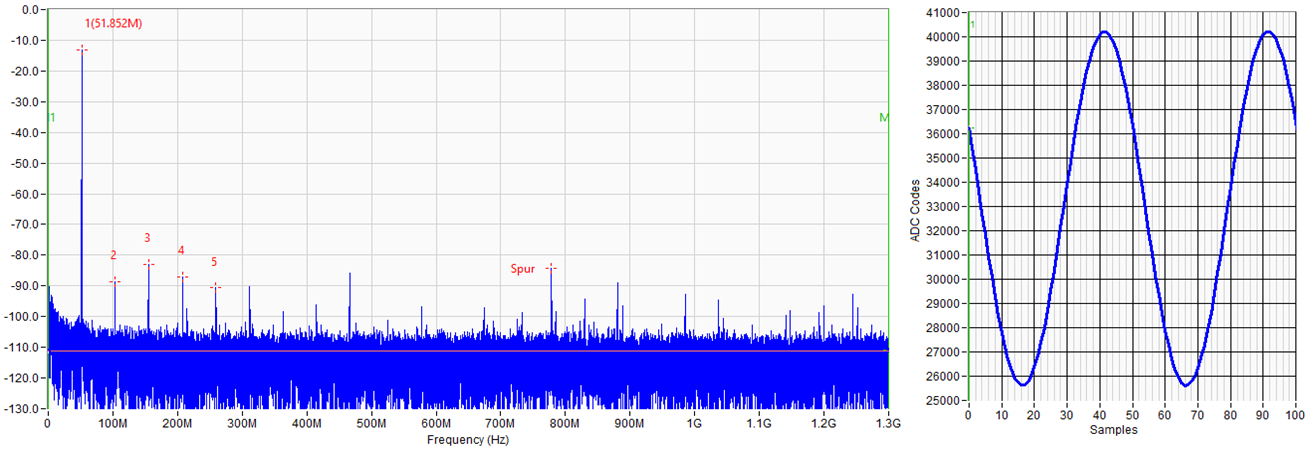SBAA590 june 2023 ADC12DJ5200RF , ADC32RF52 , ADC32RF54 , ADC32RF55 , ADC34RF52 , ADC34RF55
3.1 One-Time Calibration
The process of one-time calibration involves performing calibration only once during the initial bring-up sequence of the data converter. In the specific case of the ADC32RF55, a dual-channel, 14-bit, 3 GSPS RF-sampling ADC, the initial bring-up sequence is performed to calibrate all of the internal sub-ADC cores, allowing for data sheet performance to be realized. Without performing this one-time calibration, the converter is severely degraded and there is no worthwhile data to be processed as shown in Figure 3-1. However, after this one-time calibration, the FFT is as expected as shown in Figure 3-2.
 Figure 3-1 ADC32RF55 Output Without
One-time Calibration
Figure 3-1 ADC32RF55 Output Without
One-time Calibration Figure 3-2 ADC32RF55 Output With One-time
Calibration
Figure 3-2 ADC32RF55 Output With One-time
CalibrationSimilarly, the ADC12DJ5200RF, a dual-channel, 12-bit, 5.2GSPS RF-sampling ADC, also requires a one-time calibration such, that the gain and the offset of the sub-ADC cores are matched, thereby reducing interleaving spurs and improving SFDR. One-time calibration is performed by the serial peripheral interface (SPI) during the initial programming of both the ADC32RF55 and the ADC12DJ5200RF devices.